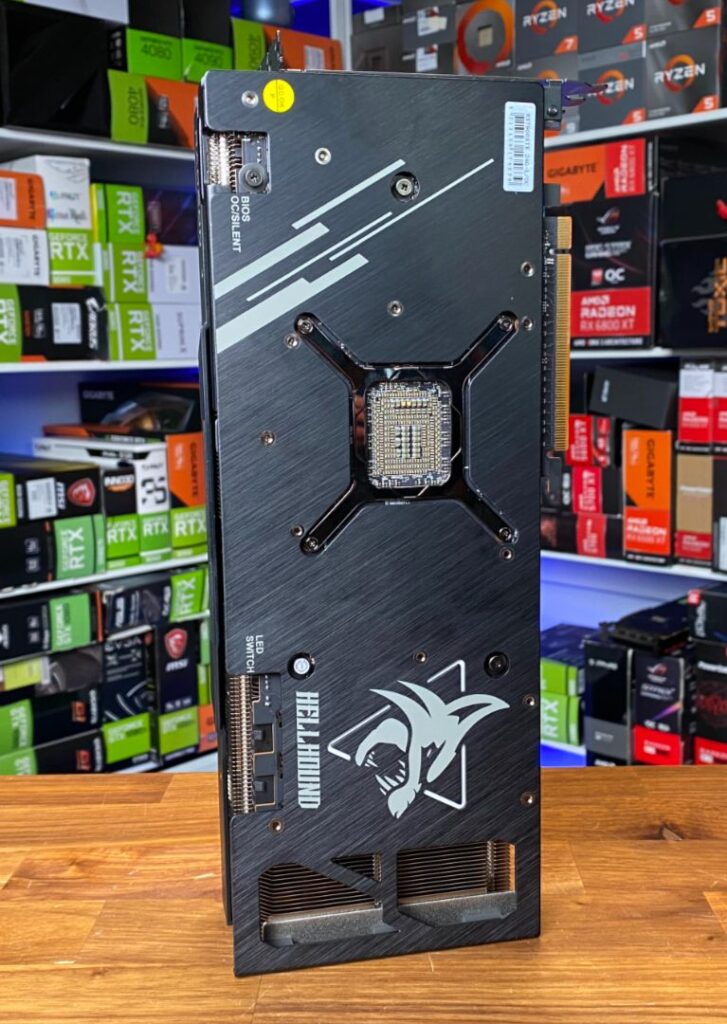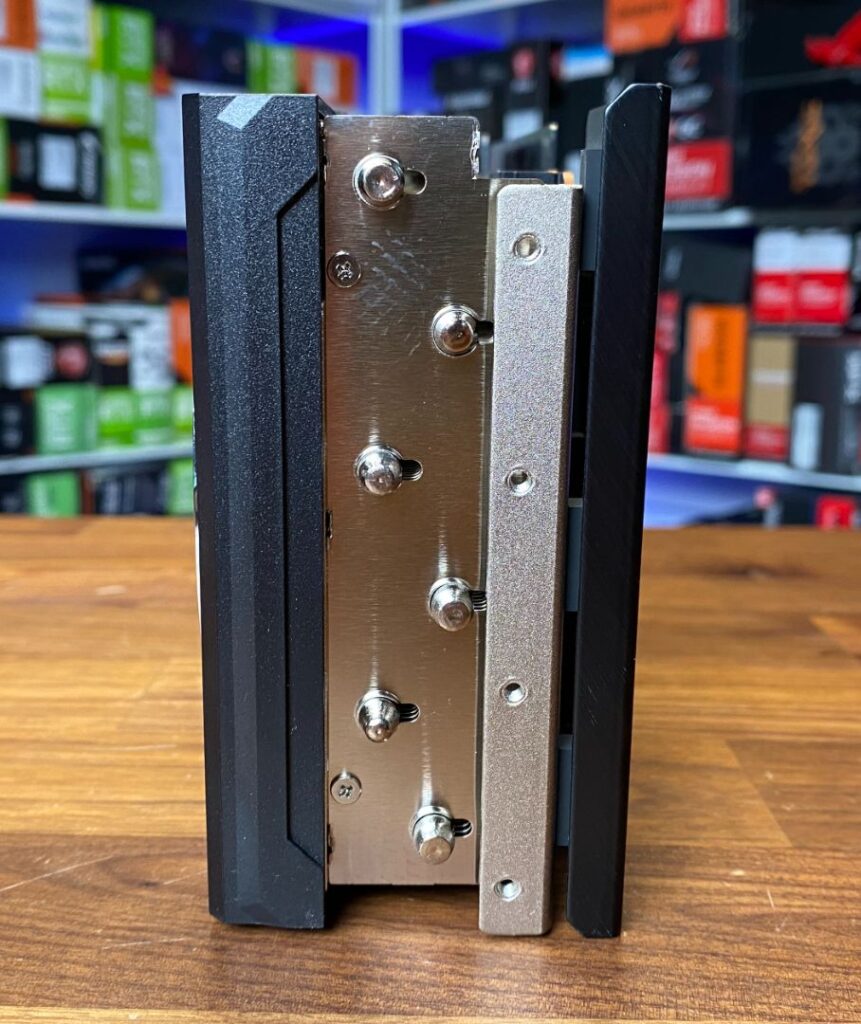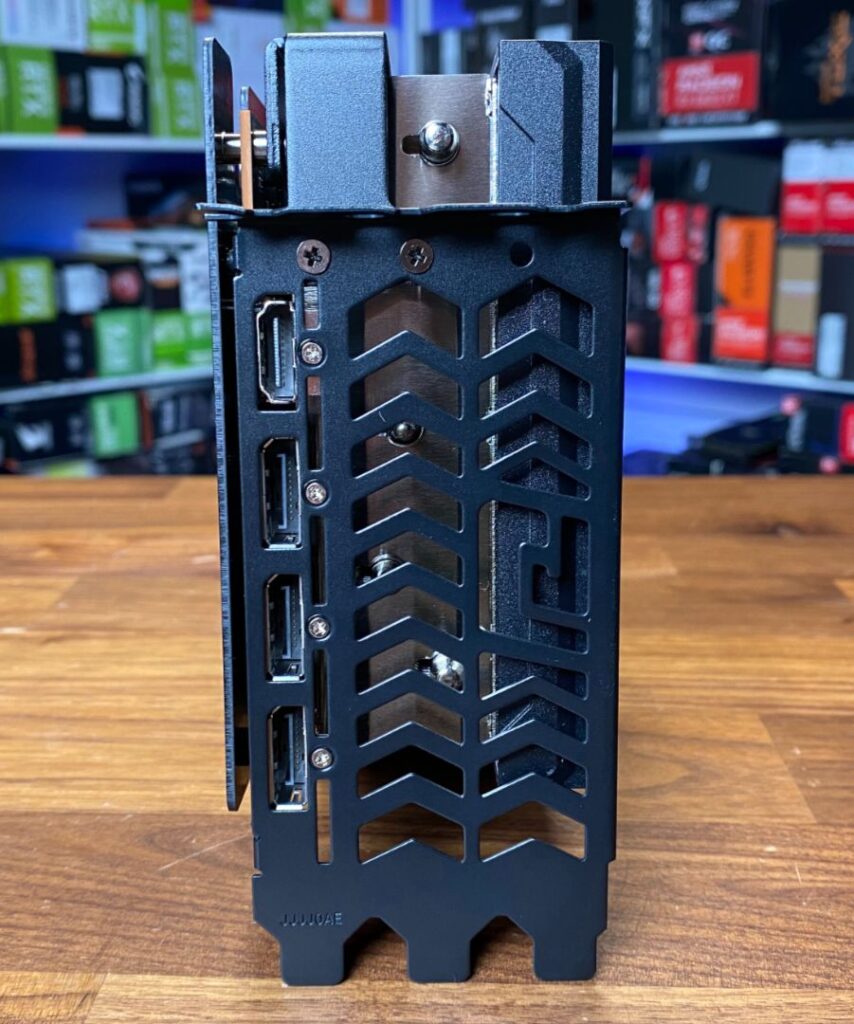PowerColor 7900 XTX HellHound Review
Peter Donnell / 2 years ago
A Closer Look
So the HellHound 7900 XTX is a pretty stand-out card in terms of its design because, firstly, it’s quite large and secondly while it includes a triple fan cooler, not all of the fans are equal with the outer two being 100mm in size, and the middle fan a tad smaller at 90mm. Couple this with the outer fans spinning in an opposite direction and a lick of colour, and it certainly stands out. Also, the fans are encased in an outer ring and PowerColor claims to have been able to drop the temperatures by around 3 degrees with these new fans. They also utilise an intelligent fan controller which can detect the temperature through a smart chip, therefore reducing the noise and longevity of each of the fans.
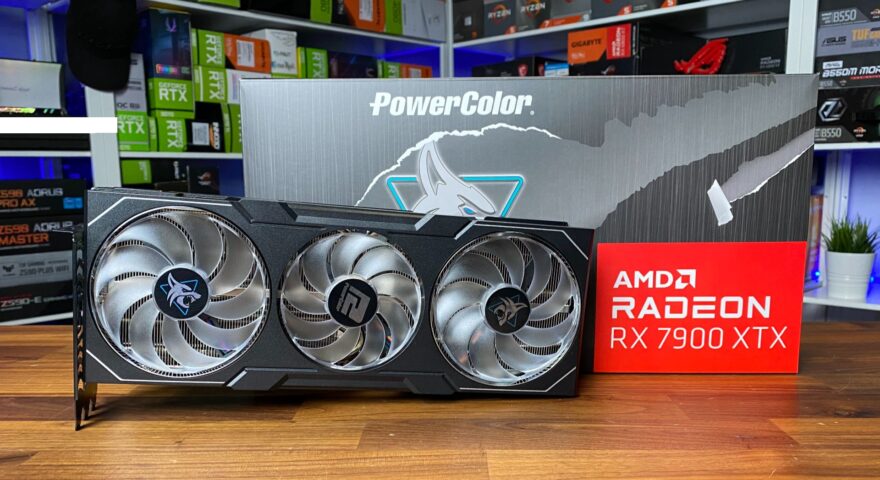
Now while the card doesn’t have RGB, it does have the ability to sparkle in Ice Blue, or Amethyst Purple, though if you prefer, you can turn it off completely which I feel will be favoured by most as it’s just a bit in your face.
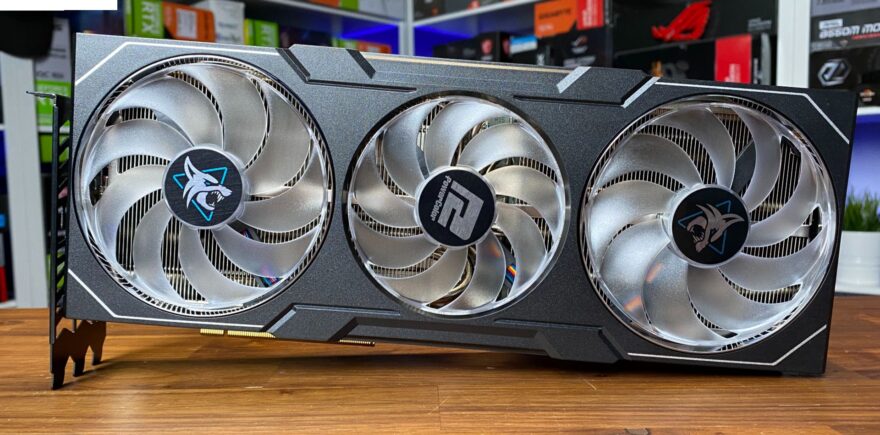
Compared to a reference AMD 7900 XTX, PowerColor has gone pretty big at just under 320mm long, 131mm tall including the PCI-Express connector and around 61mm thick, so around 3 slots in thickness. Due to the size of the card, it may cause some issues with case compatibility, but no more so than if you were looking at one of the latest cards from NVIDIA. In terms of weight, it comes in at 1760 grams, which is significantly less than the reference 7900 XTX which came in at 2065 grams.
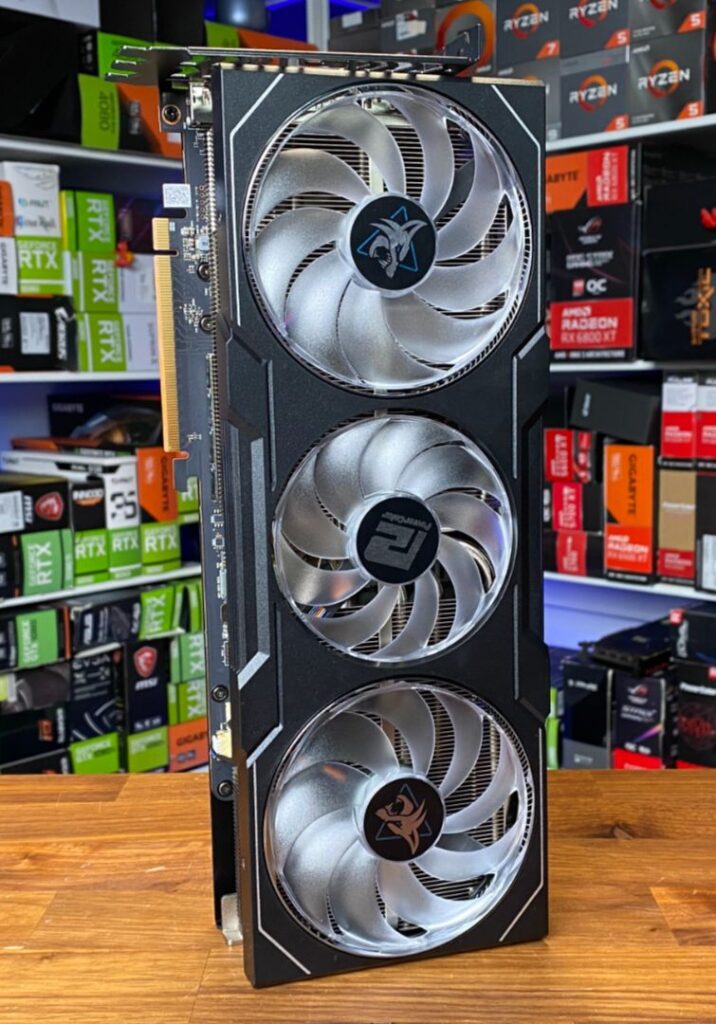
Now I won’t lie, it’s very plasticky and does feel a little cheap, and due to it being on the larger side, that could cause some issues with sag. Though a support arm is included, it’s one of those flag pole-style ones that aren’t as good as an actual bracket. I do think there’s reasoning for this though as the card incorporates a kind of bracket that sits between the rear IO and the PCB itself to add to the rigidity of the card.
There isn’t much colour on the shroud itself with just four simple silver lines to just break up the design a bit though I fear that you wouldn’t be buying this card specifically for its design. Sorry PowerColor, but they do have other products in the stack that give that extra design flair if you’re into that.
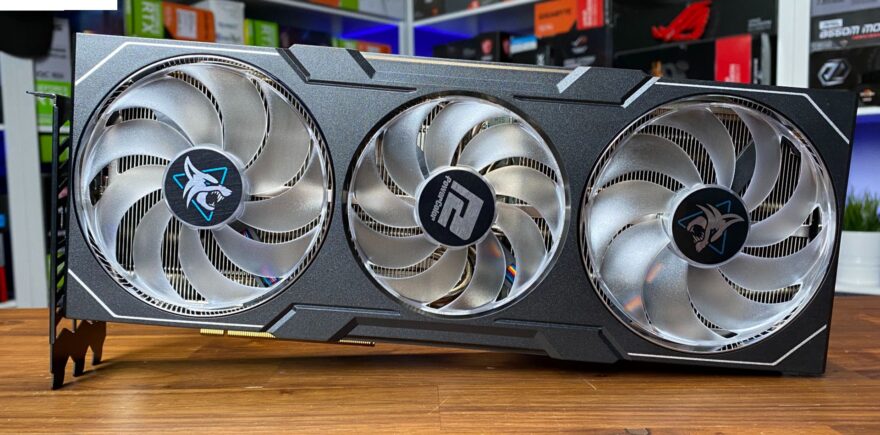
Around the top, we do find the simplistic design flows around with some simple Radeon branding. While some will appreciate the branding and the view of the large heatsink, I get that the design won’t be for everyone, but knowing that it comes with the same MSRP as the reference-based card, it’s not unexpected to see fewer materials used.
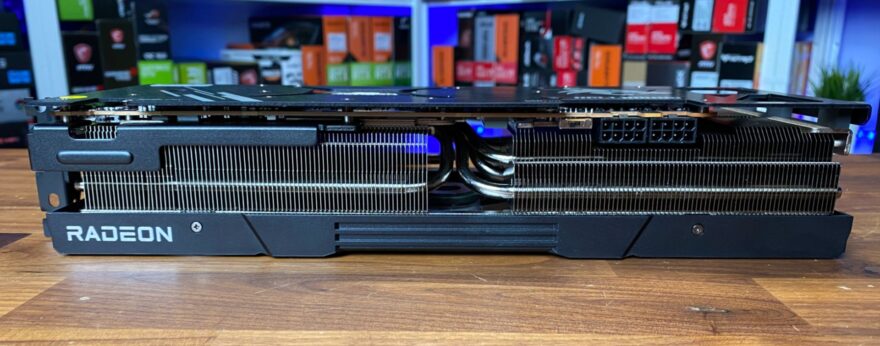
Also along the top, we find our two 8-pin PCI-Express connectors as standard, an LED switch for changing between the two colours or simply turning things off, and further along, a BIOS switch which allows you to change between silent and OC modes which comes with both different clock speeds as well as different power targets too.
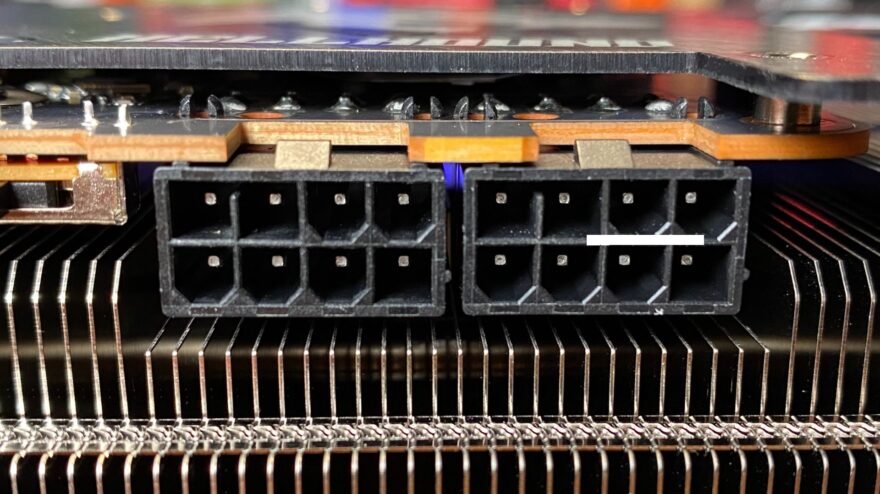
For the silent mode, the card will operate with a 291 Watt power target, a game clock of 2270MHz and a boost clock of 2500MHz while in OC mode, the power target is set to 303 Watts with a game clock of 2330MHz and a boost clock of 2525. The backplate on the card is pretty typical of the HellHound series with a pretty large HellHound logo that lights up the same colour as the fans, based on the positioning of the switch on top. Other than that, again, it’s quite simplistic in terms of the design with a brushed metal style and a small cutout for heat to escape near the end of the card.
The end of the card looks quite industrious where the shroud, backplate and heatsink all come to an end, with a few holes for mounting a support bracket, not that this card comes with that type, which is a shame to see.
Then on the I/O, we find plenty of ventilation, though, with such an open design to the card, I’m unsure as to how much air would be pushed in this direction anyway. Also, unlike the reference card, PowerColor has changed things up slightly with a single HDMI and three DisplayPort ports, while the reference card incorporated USB Type-C instead.
